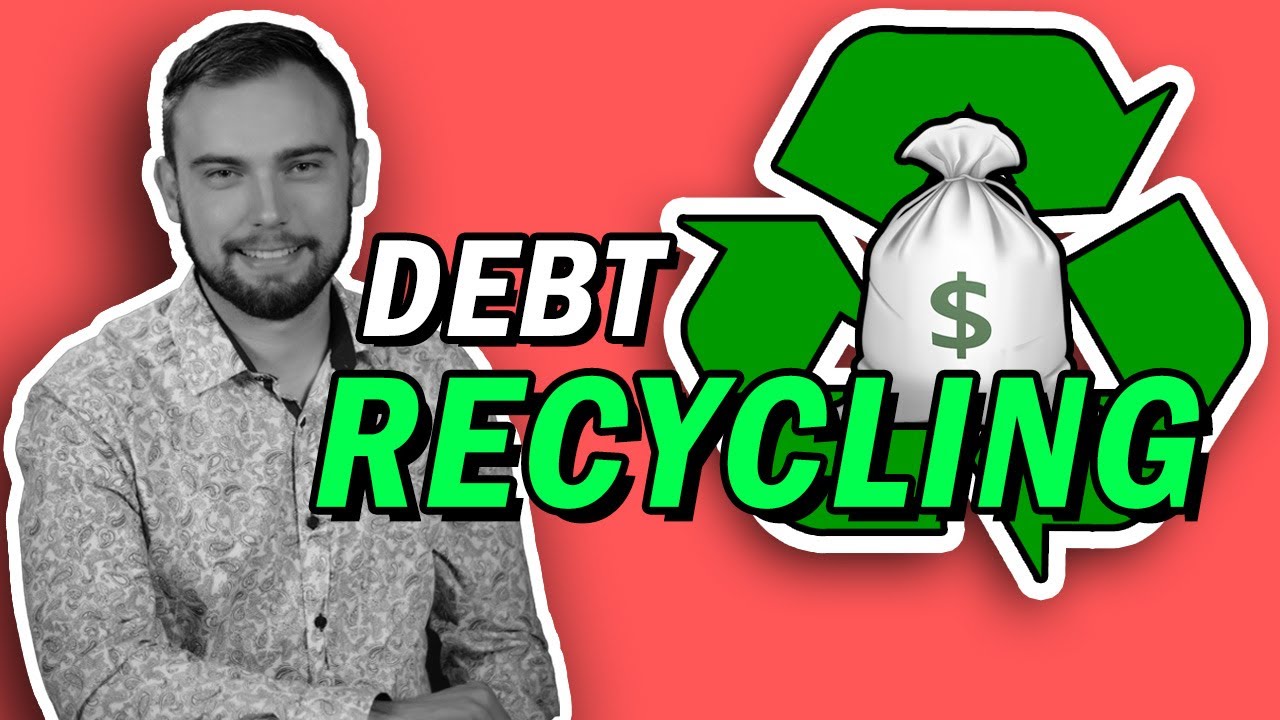Debt recycling is a financial strategy that can be instrumental in managing debt and building wealth simultaneously. By understanding the concept of debt recycling and implementing it into your financial plan, you can optimize your cash flow, reduce loan interest, and potentially increase your assets over time.
Understanding the Concept of Debt Recycling
Debt recycling involves using your existing debt to acquire income-generating assets. Debt recycling strategy is a strategic approach that allows you to leverage your debt to accumulate wealth. The basic principle behind debt recycling is to redirect non-deductible debt, such as mortgage or personal loans, towards investments that generate income or capital gains.
When considering debt recycling, it’s essential to assess the potential risks and rewards associated with this financial strategy. By understanding the market conditions, interest rates, and investment opportunities, you can make informed decisions to maximize the benefits of debt recycling. Additionally, consulting with a financial advisor or wealth management expert can provide valuable insights into structuring your debt recycling plan effectively. Visit https://meigscountyjuvenilecourt.org/debt-recycling-for-homeowners-maximising-the-potential-of-your-property-equity for maximising the potential of your property equity.
The Basics of Debt Recycling
At its core, debt recycling involves refinancing your non-deductible debt into a tax-deductible investment loan. By doing so, you can convert your bad debt, which does not provide any tax benefits, into good debt that can potentially reduce your tax liabilities. This is achieved by using the newly acquired loan to invest in income-producing assets such as shares, property, or managed funds.
Furthermore, monitoring the performance of your investment portfolio is crucial when implementing debt recycling. Regularly reviewing the returns on your investments and adjusting your strategy as needed can help optimize the outcomes of debt recycling over the long term. It’s important to stay informed about market trends and financial regulations to make well-informed decisions regarding your debt recycling initiatives.
The Role of Debt Recycling in Wealth Management
Debt recycling plays a crucial role in wealth management by allowing individuals to capitalize on their property or investment portfolio’s potential. By leveraging non-deductible debt and utilizing the tax deductibility of certain investment loans, you can accelerate the growth of your wealth. Debt recycling provides a systematic approach to navigate the intricate relationship between debt and wealth creation.
Moreover, diversification is key to a successful debt recycling strategy. By spreading your investments across different asset classes and industries, you can mitigate risks and enhance the overall stability of your portfolio. This approach can help you weather market fluctuations and economic uncertainties, ensuring a more robust financial foundation for long-term wealth accumulation.
The Pros and Cons of Debt Recycling
Like any financial strategy, debt recycling has its share of advantages and potential risks. Understanding these can help you make an informed decision when considering debt recycling as part of your financial plan.
Advantages of Debt Recycling
One of the primary benefits of debt recycling is the potential tax advantages it offers. By using a tax-deductible investment loan, you may be eligible to claim tax deductions against the interest on the loan. This can result in significant tax savings over the long term, especially if you are in a higher tax bracket.
Moreover, debt recycling allows you to capitalize on the power of compound interest. By directing your income towards reducing your loan balance and reinvesting the saved interest, you can potentially accelerate the growth of your investment portfolio.
Furthermore, debt recycling provides an opportunity to diversify your investment portfolio. By using the borrowed funds to invest in different asset classes, such as stocks, bonds, or real estate, you can spread your risk and potentially increase your chances of achieving higher returns.
Potential Risks and Drawbacks
Despite its benefits, debt recycling carries certain risks and drawbacks that need to be carefully evaluated. One of the key risks is the volatility of investment markets. If the value of your investments declines significantly, you may face difficulties in repaying the loan, potentially leading to financial strain.
Additionally, taking on additional debt to invest can increase your financial obligations and reliance on the performance of your investments. It is crucial to consider your risk tolerance and ability to service the loan before implementing a debt recycling strategy.
Moreover, it is important to note that debt recycling involves a level of complexity and requires careful monitoring. You need to stay informed about market trends, economic conditions, and changes in tax laws to ensure that your strategy remains effective and aligned with your financial goals.
Furthermore, debt recycling may not be suitable for everyone. It requires discipline, patience, and a long-term perspective. If you are not comfortable with managing debt or have a low tolerance for financial risk, it may be advisable to explore other investment strategies that align better with your financial circumstances and goals.

Steps to Integrate Debt Recycling into Your Financial Plan
Integrating debt recycling into your financial plan requires careful planning and execution. By following these essential steps, you can successfully incorporate debt recycling into your overall wealth management strategy.
Assessing Your Current Financial Situation
The first step is to assess and understand your current financial situation. Evaluate your total debt, including mortgage, personal loans, and credit card balances. Take note of the interest rates, terms, and repayment schedules associated with each debt. This assessment will provide a clear picture of your existing liabilities and enable you to determine the feasibility of debt recycling.
For example, if you have a mortgage with a high-interest rate and a credit card balance with a low-interest rate, you may consider prioritizing the repayment of the mortgage through debt recycling. This strategic approach can help you save on interest payments and accelerate the growth of your wealth.
Setting Your Financial Goals
Identify your financial goals and consider how debt recycling can help you achieve them. Whether it’s repaying your mortgage faster, building an investment portfolio, or maximizing tax efficiencies, clearly defining your objectives will serve as a guiding force throughout the debt recycling process.
For instance, if your goal is to retire early, debt recycling can be a powerful tool to accelerate your wealth accumulation. By strategically managing your debts and investing in income-generating assets, you can create a sustainable income stream that supports your desired lifestyle during retirement.
Implementing Debt Recycling Strategy
Once you have assessed your financial situation and established your goals, it’s time to implement your debt recycling strategy. Start by refinancing your non-deductible debts, such as personal loans or credit card balances, into a tax-deductible investment loan.
By doing so, you can potentially reduce your overall interest expenses and redirect those savings towards your investment portfolio. This approach allows you to leverage the tax benefits associated with investment loans while simultaneously paying off your non-deductible debts.
Next, carefully select and invest in income-generating assets that align with your risk tolerance and financial objectives. It is crucial to diversify your investments to minimize risk and maximize returns. Consider a mix of stocks, bonds, real estate, and other investment vehicles to create a well-rounded portfolio.
Remember to regularly revisit and adjust your investment strategy as needed to ensure it remains aligned with your goals. Market conditions and personal circumstances can change over time, so staying proactive and adaptable is key to the success of your debt recycling journey.

Monitoring and Adjusting Your Debt Recycling Plan
Successfully managing debt and wealth requires ongoing monitoring and adjustments. Regularly reviewing your financial plan and making necessary tweaks is essential in optimizing your debt recycling strategy.
When it comes to debt recycling, staying proactive and vigilant is crucial. By continuously monitoring your financial situation, you can stay ahead of any potential issues and capitalize on opportunities to enhance your wealth-building efforts. This level of attentiveness ensures that your debt recycling plan remains aligned with your overall financial goals.
Regular Review of Your Financial Plan
Evaluate the performance of your investments and track your progress against your goals. This includes monitoring the returns generated by your income-generating assets, loan interest rates, and market conditions. Regularly reviewing your financial plan will help you identify any changes needed to realign your strategy with your objectives.
Furthermore, conducting regular financial plan reviews allows you to assess the impact of external factors, such as economic trends or legislative changes, on your debt recycling strategy. By staying informed and adaptable, you can proactively adjust your plan to navigate any challenges or leverage new opportunities that arise.
Making Necessary Adjustments
Based on your financial plan review, make adjustments to your debt recycling strategy as required. This may involve rebalancing your investment portfolio, refinancing loans to take advantage of lower interest rates, or redirecting surplus income towards debt reduction. Flexibility and adaptability are key to ensuring your debt recycling plan remains effective in the long run.
Moreover, being open to making necessary adjustments demonstrates your commitment to financial growth and stability. Embracing changes and fine-tuning your debt recycling approach can lead to enhanced wealth accumulation and long-term financial security.
Seeking Professional Advice on Debt Recycling
While it is possible to implement debt recycling independently, seeking professional advice can greatly enhance the effectiveness and overall outcomes of your strategy. However, the decision to consult a financial advisor should not be taken lightly. There are several factors to consider before making this important choice.
When to Consult a Financial Advisor
If you lack a comprehensive understanding of financial markets, investment options, or tax implications, it is advisable to consult a financial advisor. A professional can provide personalized advice tailored to your specific circumstances and guide you through the complexities of debt recycling. They can help you navigate the intricate world of finance and ensure that you make informed decisions.
Moreover, a financial advisor can assist you in assessing your risk tolerance and determining the most suitable investment strategies for your goals. They can help you analyze your current financial situation, evaluate your assets and liabilities, and devise a customized plan that aligns with your long-term objectives.
Choosing the Right Financial Advisor for Debt Recycling
When selecting a financial advisor for debt recycling, consider their expertise in wealth management and debt optimization. Look for professionals with relevant qualifications and experience in delivering successful debt recycling strategies to their clients. A good financial advisor should have a deep understanding of the intricacies of debt recycling and be able to explain complex concepts in a clear and concise manner.
Additionally, seek recommendations and conduct thorough research to ensure they are reputable and trustworthy. Look for advisors who have a strong track record of helping clients achieve their financial goals through debt recycling. It is also important to find someone who is accessible and responsive, as ongoing communication and support are crucial in the debt recycling process.
Remember, debt recycling is a long-term strategy that requires careful planning and execution. It is not a one-size-fits-all approach, and the guidance of a knowledgeable professional can make a significant difference in your financial journey.
In conclusion, integrating debt recycling into your financial plan can be a powerful tool in managing debt and building wealth. By understanding the concept, weighing the pros and cons, and following the necessary steps, you can leverage your debt to accelerate your wealth creation journey. Remember to regularly monitor and adjust your debt recycling plan, and seek professional advice whenever necessary. With careful planning and execution, debt recycling can become an integral part of your financial strategy, propelling you towards a brighter financial future.
